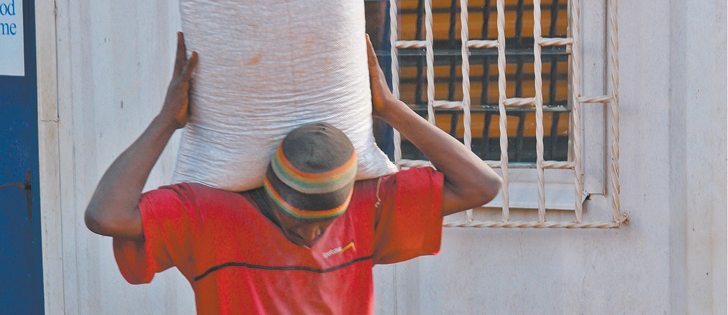The recent decision to merge the Canadian International Development Agency into the new Department of Foreign Affairs, International Trade and Development isn’t the first time Canada’s aid program has been profoundly changed.
Another major change occurred five years ago in April when the government fully untied Canadian food aid.
Then, as now, it was a matter of balancing competing interests.
Then, it was balancing the needs of people who are hungry in the developing world with the fortunes of Canadian farmers and other commercial interests.
Read Also

Proactive approach best bet with looming catastrophes
The Pan-Canadian Action Plan on African swine fever has been developed to avoid the worst case scenario — a total loss ofmarket access.
Today, the question is balancing Canadian prosperity and security with the needs of the world’s poorest, most vulnerable citizens.
The story goes back to the 1950s, when Canada started its food aid program and was struggling with an agricultural surplus.
At the same time, people in countries in Africa and Asia were facing hunger due to drought. Food aid was seen as a way to help, as well as deal with the surplus.
It did benefit many in the developing world, but it was also self-interest in disguise — a way to help Canadian farmers sell their surplus crops and stabilize prices.
A stronger focus on helping others was developed when CIDA was established in1968.
In 1975 it developed a food aid strategy that allowed non-governmental organizations to use government funds to buy up to 20 percent of food aid from local farmers in developing countries.
However, by 1980 pressure from Canadian farm organizations and others caused the “untying” of aid to be scaled back to allow only five percent of food to be bought locally, and then only in emergencies.
This was not the best, or most efficient, way to help people who were hungry. Food had to be shipped to the developing world because only food from Canada could be bought with government funds.
This was not only costly but also took a lot of time, often at least two to three months.
To improve the situation, Canadian food aid policy was relaxed a little. NGOs such as the Canadian Food-grains Bank were permitted to buy up to 10 percent of food aid locally, starting in the early 1990s, but it still didn’t resolve the challenges.
In the late 1990s, the foodgrains bank and other aid groups decided to ask the government to fully untie food aid, arguing that it was a more efficient use of government funds, allowed aid to get to hungry people more quickly, and didn’t harm local farmers.
The response of the Canadian government was mixed. CIDA supported the request, but Agriculture Canada was opposed. Politicians were cautious, fearing a negative response from rural voters.
It took the tragedy of the 2004 Southeast Asian tsunami to change people’s minds. Within three months, Canadian food aid policy was changed to allow aid groups to use Canadian funds to buy 50 percent of food aid in the developing world.
In April 2008, the government changed food aid policy again, fully untying Canadian food aid.
So what caused these changes?
One thing was the clear fact that buying locally was a better use of Canadian taxpayer money. Another was the effect in the developing world: helping support local farmers made good development sense.
Looking back on this fifth anniversary of the full untying of food aid, we celebrate this change.
At the same time, we realize that balancing the needs of poor people in the developing world and Canada’s economic interests is an ongoing conversation.
Today, with the merger of Canada’s aid, trade and diplomatic portfolios into the new Department of Foreign Affairs, International Trade and Development, there is a new discussion about the role Canadian aid can play in benefitting Canada.
While aid can be beneficial for Canada, it is the hope of the food-grains bank that the needs of the poorest people on the planet will be highest priority, even if we don’t get anything in return.
Stuart Clark is a special adviser at Canadian Foodgrains Bank, a partnership of 15 churches and church agencies working together to end hunger. This article has been edited for length.

















